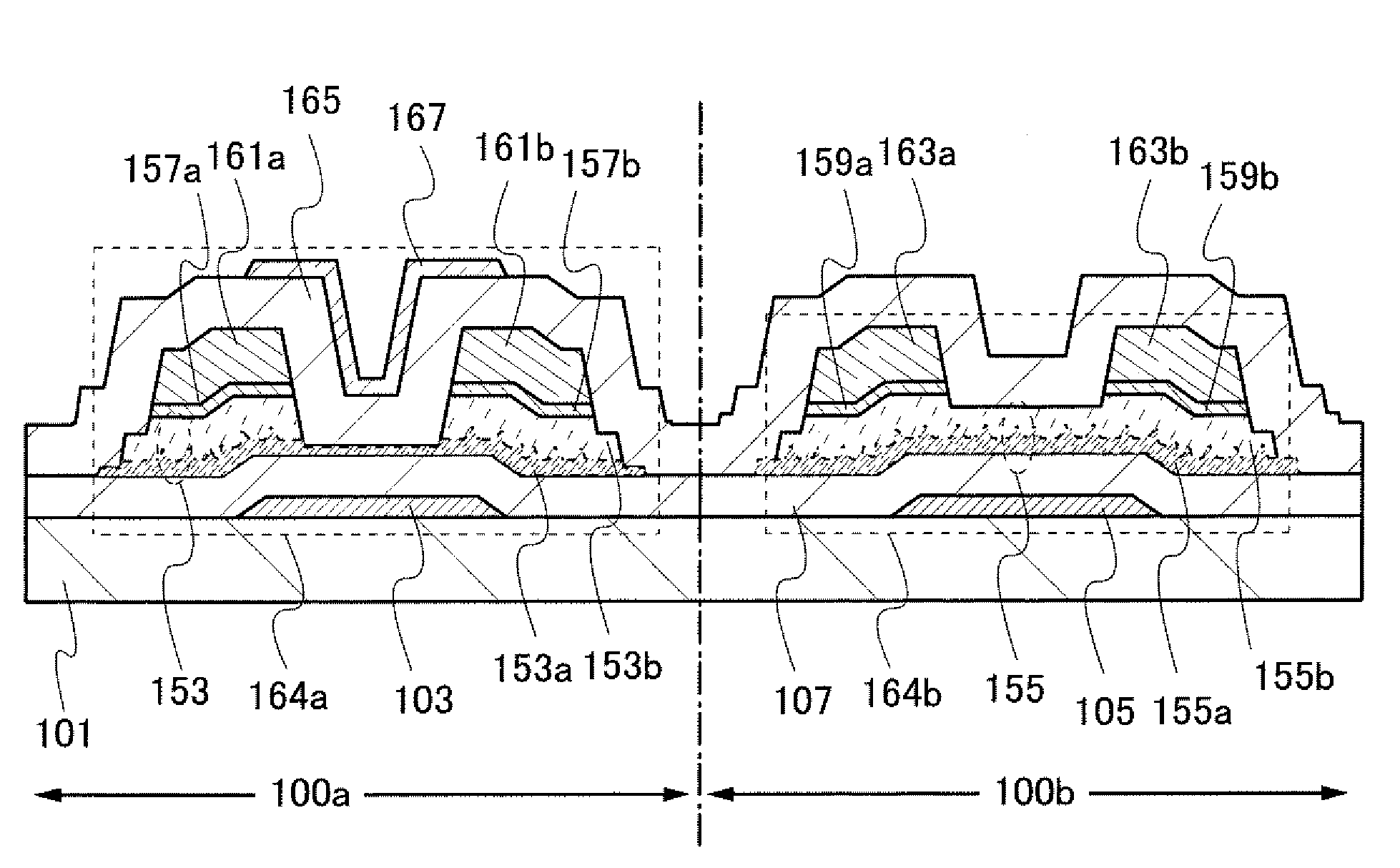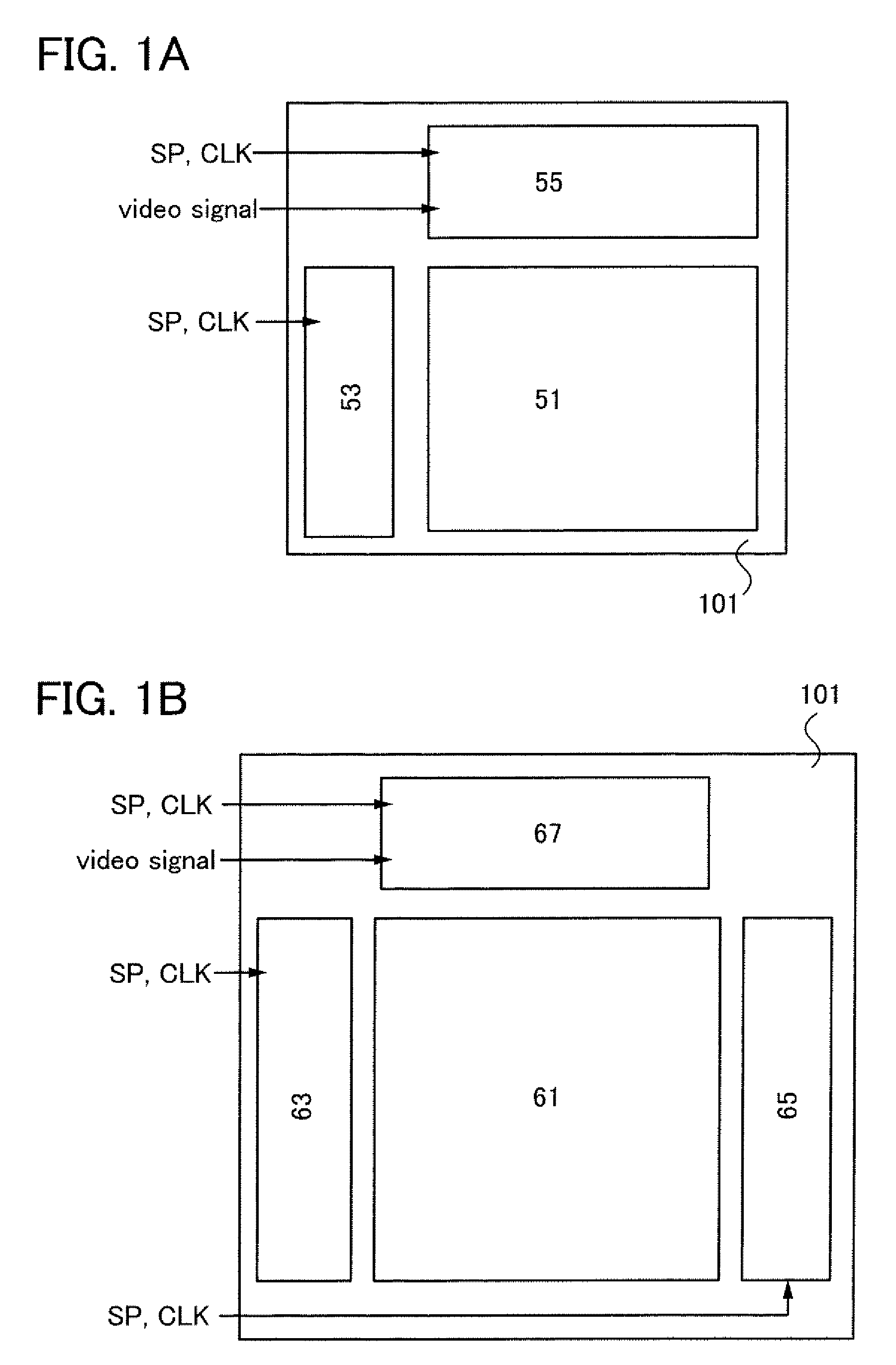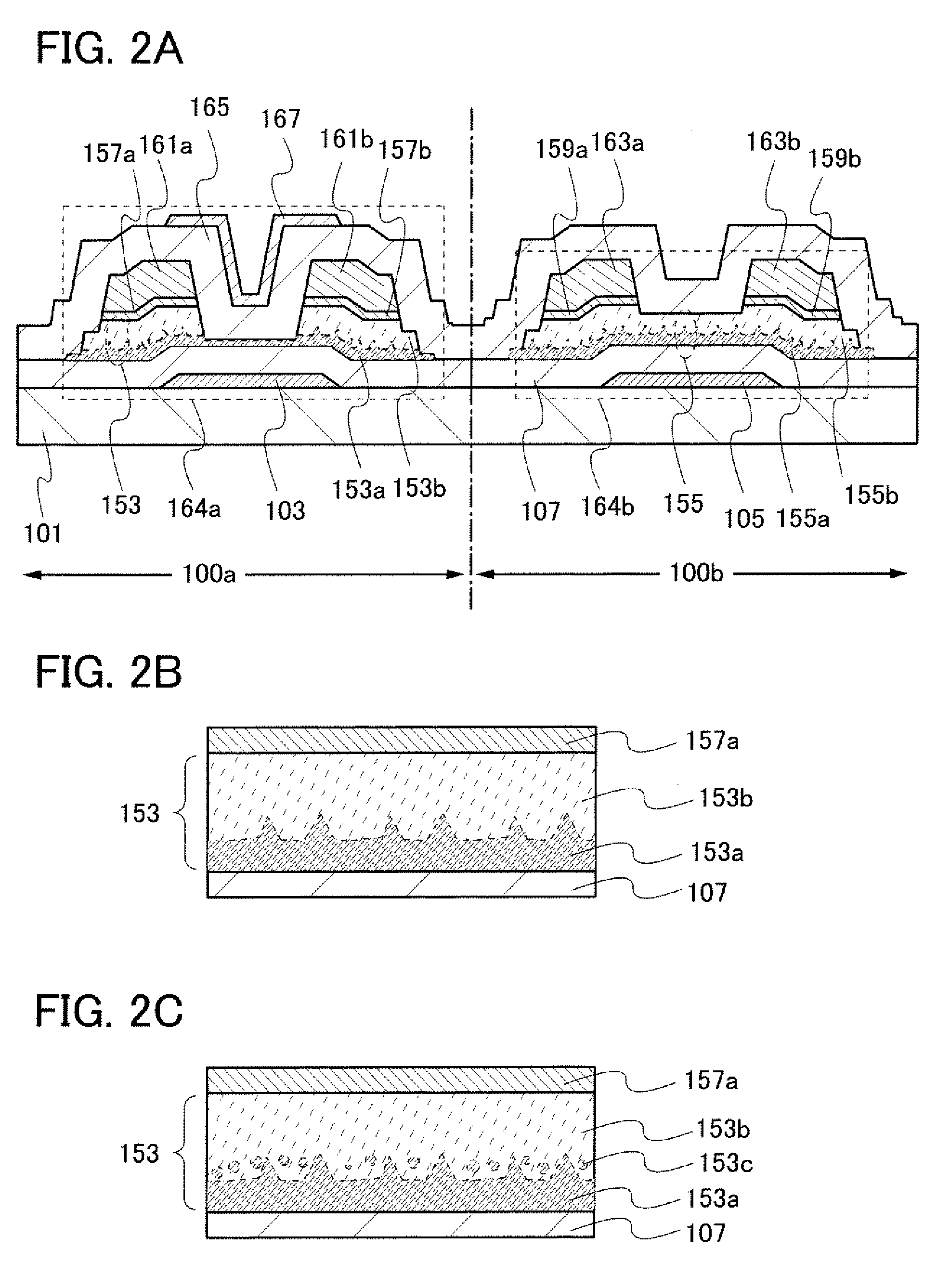Display device
a display device and display technology, applied in the field of display devices, can solve the problems of low field-effect mobility, thin film transistor deterioration, low on-state current, etc., and achieve the effects of reducing the cost of the display device, improving the display characteristics of images, and narrowing the frame of the display devi
- Summary
- Abstract
- Description
- Claims
- Application Information
AI Technical Summary
Benefits of technology
Problems solved by technology
Method used
Image
Examples
embodiment 1
[Embodiment 1]
[0044]In this embodiment, a display device which is one embodiment of the present invention will be described with reference to FIGS. 1A and 1B, FIGS. 2A to 2C. FIGS. 3A to 3C, and FIG. 4. As for a thin film transistor used for a display device, an n-channel transistor has higher carrier mobility than a p-channel transistor. Further, it is preferable that all thin film transistors formed over one substrate have the same polarity because the number of manufacturing steps can be reduced. Therefore, in this embodiment. an n-channel thin film transistor will be described.
[0045]FIG. 1A is a block diagram illustrating an example of an active matrix liquid crystal display device. The liquid crystal display device illustrated in FIG. 1A includes a pixel portion 51 including a plurality of pixels each provided with a display element, a scan line driver circuit 53 controlling a scan line connected to a gate electrode of each pixel, and a signal line driver circuit 55 controlling...
embodiment 2
[Embodiment 2]
[0095]In this embodiment, a thin film transistor which is different from that described in Embodiment 1 will be described with reference to FIGS. 5A and 5B.
[0096]In FIG. 5A, a thin film transistor 178a formed in a driver circuit 100a corresponds to the thin film transistor 164a in Embodiment 1 and a thin film transistor 178b formed in a pixel portion 100b corresponds to the thin film transistor 164b in Embodiment 1. The structures other than those described hereinafter are similar to those of the thin film transistors 164a and 164b.
[0097]In the thin film transistors 178a and 178b, semiconductor layers 179 and 181 each have a stacked-layer structure in which microcrystalline semiconductor regions 179a and 181a and amorphous semiconductor regions 179b and 181b are stacked, respectively. The amorphous semiconductor regions 179b and 181b are formed using amorphous silicon.
[0098]Here, a detailed structure of the semiconductor layers 179 and 181 is described. Here, FIG. 5B ...
embodiment 3
[Embodiment 3]
[0103]In this embodiment, a thin film transistor which is different in the structure from that described in Embodiment 1 will be described with reference to FIGS. 6A and 6B.
[0104]In FIG. 6A, a thin film transistor 174a formed in a driver circuit 100a corresponds to the thin film transistor 164a in Embodiment 1 and a thin film transistor 174b formed in a pixel portion 100b corresponds to the thin film transistor 164b in Embodiment 1.
[0105]In the thin film transistors 174a and 174b, each end portions of semiconductor layers 153 and 155 are positioned not outside gate electrodes 175 and 177 but over the gate electrodes 175 and 177, with a gate insulating layer 107 provided therebetween. With the structure of the thin film transistors 174a and 174b, in a display device including a backlight such as a liquid crystal display device, the gate electrodes 175 and 177 each serve as a light-blocking member with respect to light delivered to the semiconductor layers 153 and 155; t...
PUM
 Login to View More
Login to View More Abstract
Description
Claims
Application Information
 Login to View More
Login to View More - R&D
- Intellectual Property
- Life Sciences
- Materials
- Tech Scout
- Unparalleled Data Quality
- Higher Quality Content
- 60% Fewer Hallucinations
Browse by: Latest US Patents, China's latest patents, Technical Efficacy Thesaurus, Application Domain, Technology Topic, Popular Technical Reports.
© 2025 PatSnap. All rights reserved.Legal|Privacy policy|Modern Slavery Act Transparency Statement|Sitemap|About US| Contact US: help@patsnap.com



